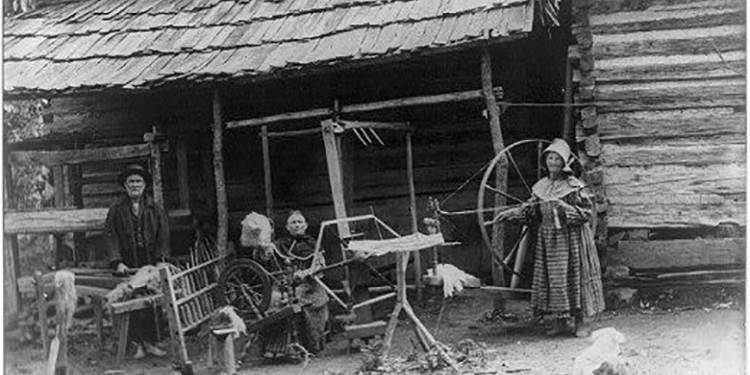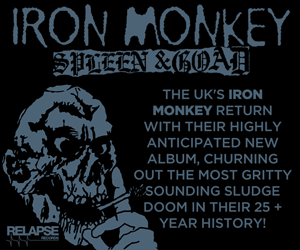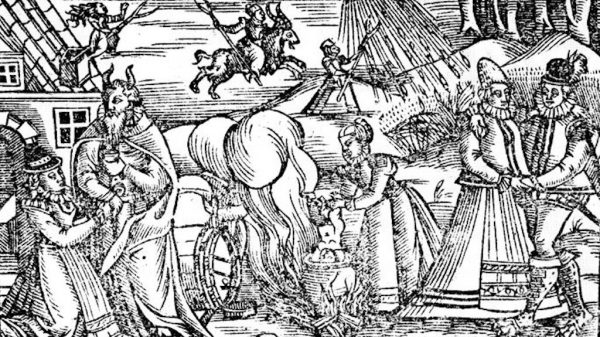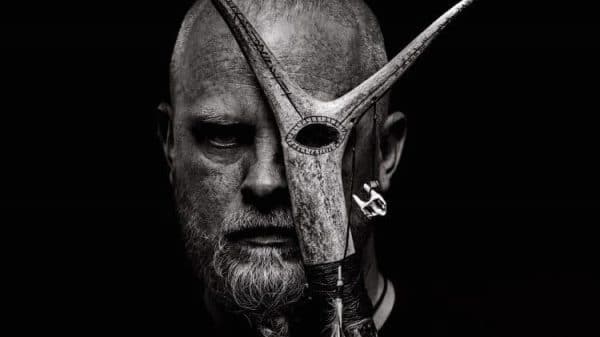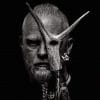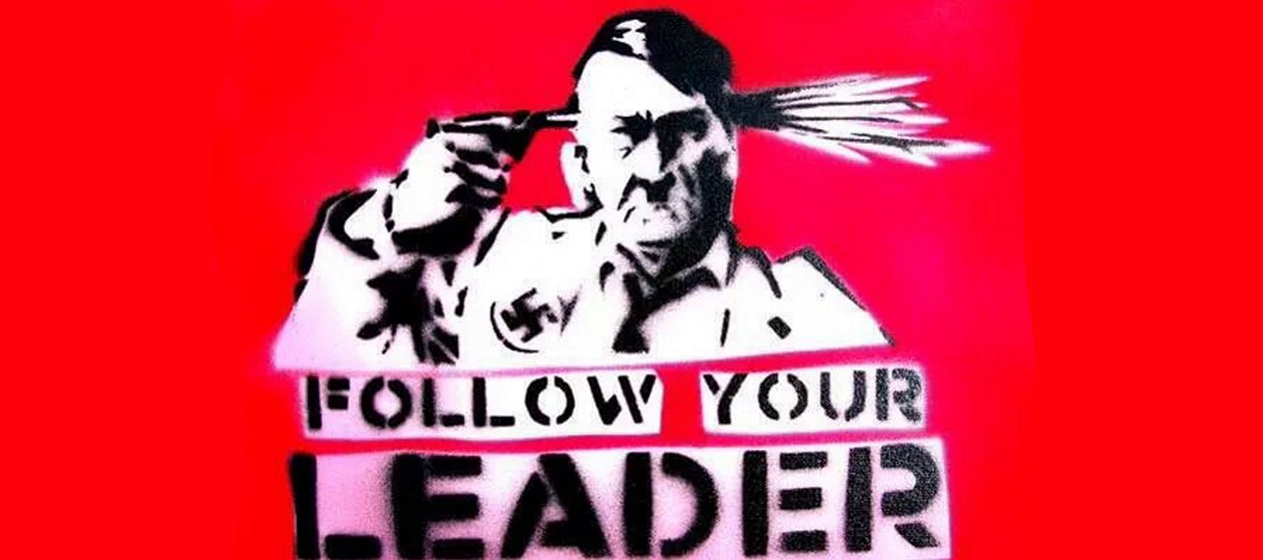My father died on Imbolc. It was, in many ways, a perfect death. Surrounded by his son and daughter and wife, breath winding down until a final cessation. It was a death far more peaceful than maybe he actually deserved. Like all Bunch men, he was of Pictish stock and bore the Mark of Cain. He was, without pause, a man of his appetites. He never really made peace with the demon that watched over him and will have to work that out in the next life. Nevertheless, he taught me the land and the mysteries it held. He was a hunter who would have probably wished to die in a tree stand or duck blind than in bed surrounded by family. To that end, my final words to him were that Cernunnos was waiting for him in the eternal hunting grounds. He felt at home in the woods, and through him I learned the cycles of nature and life and death. He came by this honestly as a child raised in rural Kentucky, a place he described as very “pagan,” although he was, himself, a deist.

My grandparents Virgil and Betty Bunch
A few months before he passed, I was working on an article about a supposed killer ghost that haunted Southeastern Kentucky, and I asked him if he had ever heard of the legend. He had not (mainly because, as I uncovered, it seems to have been a modern invention), but it gave me an opportunity to ask him about growing up in that part of Kentucky and the spirituality of the region, which was far less cut and dry than modern urban sophisticates might imagine.
Although officially the predominate religion of the region in the 1900s was Evangelical Protestantism, with Presbyterian and Baptists fighting for hegemony, in reality “they were Christians, but with very pagan beliefs,” my father told me. “Their bible was the Farmer’s Almanac, and you did things by how the stars and the moon were aligned.”
It is not surprising, then, that the one book I remember being on display in our home throughout my childhood was the Farmer’s Almanac. The Almanac, which is published to this day, is an annual periodical focusing on seasonal predictions concerning the weather and astronomy as well as articles covering a wide variety of subjects centered around conservation, simple living and sustainability. Natural home remedies are a staple of the publication. Although not a grimoire, the Almanac is so revered in the neo-pagan community that pagan-specific permutations are published yearly under titles such as “The Witches’ Almanac,” “The Sabbats Almanac,” “The Herbal Almanac” and “The Magical Almanac.”
Many readers of the Almanac undoubtedly see themselves as Christians, although interestingly enough the primacy of the Almanac in rural culture alongside the Bible was so common that at one time mainstream country musicians like Randy Travis sang of its prominence:
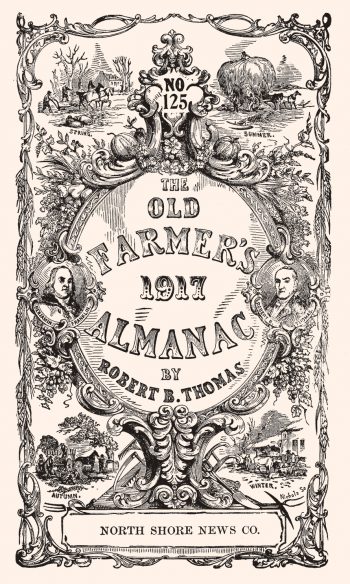 My father’s father was the wisest man I ever knew
My father’s father was the wisest man I ever knew
Sixty years of education, seven years of school
Farming kept his body strong
At night the only books he owned kept his mind sharp as a tack
The Family Bible and the Farmer’s Almanac
When to Plant, when to harvest
How you reap just what you sow
When to look for rain and who to turn to when it don’t
There was a plan for early frost
Salvation for the lost
Words to live and die by front to back
The Family Bible and the Farmer’s Almanac.
While at first there may seem nothing at odds with the reliance of rural Christians on the Farmer’s Almanac (mainly because it is just a given); in fact such a predictive tome is anathema to orthodox Christianity, which admonishes against any form of divination. Although the Almanac is certainly on the milder end of the soothsaying spectrum, it is still on the spectrum.
What is most interesting about their reliance on the Almanac is not necessarily the commission of light heresy, but that it speaks to humanity’s purest and most primal spiritual orientation, which is that of magical thinking derived from the natural world.
 My father confirmed this when he told me “these were very superstitious people. Yeah, there was church, but you had elders who were ascended and were deemed to have much more intelligence – a spiritual intelligence.” These elders included healers, and “wise” men and women, and while Sunday sermons was one thing, daily living was another. Isolated from cities and the professionals who lived in them, the type of rural community that my father was raised in had to be self-reliant, and their “doctors” were not relying on Grey’s Anatomy for guidance, instead they were more likely to consult early American grimoires like The Long Lost Friend.
My father confirmed this when he told me “these were very superstitious people. Yeah, there was church, but you had elders who were ascended and were deemed to have much more intelligence – a spiritual intelligence.” These elders included healers, and “wise” men and women, and while Sunday sermons was one thing, daily living was another. Isolated from cities and the professionals who lived in them, the type of rural community that my father was raised in had to be self-reliant, and their “doctors” were not relying on Grey’s Anatomy for guidance, instead they were more likely to consult early American grimoires like The Long Lost Friend.
A compendium of German folk magic first published in Pennsylvania in 1820 by John George Hohman, “The Long Lost Friend” included natural remedies, spells and 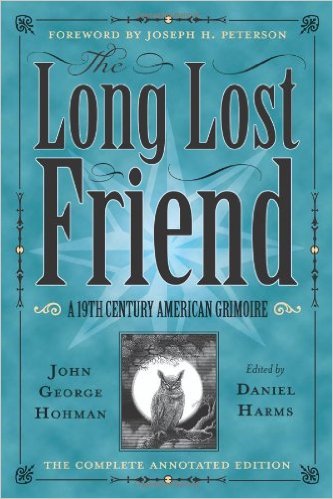 charms against everything from the common cold to bullet wounds. Daniel Harms, writing in the introduction to his edition of the grimoire, describes the transmission of “old world” magical remedies and recipes to the new world in the following manner:
charms against everything from the common cold to bullet wounds. Daniel Harms, writing in the introduction to his edition of the grimoire, describes the transmission of “old world” magical remedies and recipes to the new world in the following manner:
In an age with few doctors and no health insurance, medical care in Germany was rarely conducted via trained medical specialists. Those Germans who immigrated to the New World found the situation exacerbated, with most health services and resources available only in the English language. A strong tradition of household self-sufficiency combined with a dearth of physicians among the German-speaking population of rural Pennsylvania led to medical practice based upon a mixture of medically trained clergy, pharmacies, herbalists, midwives, home remedies, popular literature and visits to the brauchers, or healers.
Such a state of affairs was certainly not exclusive to the Pennsylvania Dutch. Indeed, it was indicative of most rural communities of the time, whether they were English, German or Scottish. Each came from areas in Europe with long traditions of folk magic, which they brought to the New World. Each community was also isolated and poor by default. There may not have been a trained medical doctor anywhere near their communities, so they were left to cure and treat their own in the only way they knew how; based on wisdom passed down through their ancestors.
While prayer was a large part of their practice, it was often conjoined with natural folk magic. This is certainly no great secret, as numerous Christianized spells and methods can be found in the pages of any early American grimoire. Even practicing witches engaged in the “dual-faith” practice of going to church on Sunday after using the Psalms to curse on a Friday, lest they be discovered. No doubt some of the local midwives and healers kept some secrets to themselves as well.

Paul’s Sermon at Ephesus against paganism complete with book burning
What is somewhat surprising, though, is that these practices continued at all after the Christianization of Europe. It is no great revelation that the Church saw magic, divination and witchcraft as a challenge to their supreme authority. Christianity is so reliant upon slavish dependency to its authority alone that “dual-faith” is per se heresy. Of course, there is scriptural authority for such a hardline position (Leviticus 19:26 and Deuteronomy 18:10 both carry strong admonitions against witchcraft, divination and sorcery, while Paul spent a lot of time running around damning pagans and magicians for their devilish ways and “making crooked the straight paths of the Lord,” Acts 13:10), but the larger issue is that if the individual becomes self-reliant through the use of magic, then what need is there for the authority of the Church?
In his forward to The Long Lost Friend, Joseph H. Peterson hints at this when he writes:
Despite efforts by centuries of rationalists, skeptics and authorities whose livelihoods were threatened by popular self-help publications like this, practices that are essentially magical show little signs of disappearing. Self-reliance is powerful. When people maintain a sense of control in their lives, they are freed from absolute reliance on various religious, medical and government leaders for personal protection and well being.
Of course, many of the practitioners of folk magic undoubtedly considered themselves good Christians without much thought to cognitive dissonance. Indeed, in his own introduction to the first pressing of the book, Hohman himself declared a scriptural basis in Psalms for the use of such magic, while also claiming it was incumbent on all good Christians to ignore admonitions from the pulpit and to avail themselves of such practices that he believed were in keeping with the wishes of the Lord:
If men but use out of this book what they actually need, they surely commit no sin; yet woe unto those who are guilty that anyone loses his life in consequences of mortification, or loses a limb, or the sight of they eye! Woe unto those who misconstrue these things at the moment of danger, or who follow the ill advice of any preacher who might teach them not to mind what the Lord says in the fiftieth Psalm. ‘Call upon me in the day of trouble: I will deliver thee, and thou shalt glorify my.’ Woe unto those who, in obeying the direction of the preacher, neglect using any means offered by this book against mortification, or inflammation of the wheal. I am willing to follow the preacher in all reasonable things, yet when I am in danger and he advises me not to use any prescriptions found in this book, in such a case I shall not obey him. And woe also unto those who use the name of the Lord in vain for trifling purposes.
Another reason that such practices flourished may also very well be a systemic problem with Christianity itself. Although not in theory, in practice, Christianity maintained plenty of paganism to keep the natives happy.

The history of Christianity in Europe was not only suppression and witch trials; it was also co-option of local pagan customs. Nowhere is this more apparent than the Christian Holy Days. There is scant historical or Biblical evidence to back up the ordering of Christian calendar outside of traditional pagan practices. For example, Christ, if he ever lived, was likely born in the spring, not December; yet his birth is celebrated smack dab in the middle of the Yule season, a time marked for the return of the light to the land in the Northern Hemisphere. In a similar manner, Easter corresponds with spring fertility celebrations, and even though it is likely Easter was set to correspond with Passover, that holiday has origins that pre-date its alleged purpose as well. It is undeniable the Christian calendar corresponds directly to the cycles of nature in the Northern Hemisphere, as well as the pagan practices that arose from those cycles. This becomes a systemic issue for a Church that is seeking to stamp out all other competition, particularly competition from native spiritual practices. While the idea was to co-opt and consume, the essence of these practices still remain, allowing a foothold for traditional practices to fester and grow through the cracks in the cornerstones of St. Peter’s.

A Serbian Orthodox Priest maintains the traditional pagan practice of burning a sacred oak during Christmas Eve celebrations.
As a result, the reality of Christian praxis more than allowed the perpetuation of folk practices, including magic, despite the admonitions of Church authorities. Compounding this fact is that during the Middle Ages, magic was kept alive by the clergy themselves, some of whom practiced forms of Ceremonial Magic all in the name of Jesus. It took but a little bit of literacy and oral transmission for the masses to marry their folkways to Christianity and couch it in the language of the Church. It is therefore not too surprising that the Psalms were (and still are in some traditions) a popular vehicle for spell casting.
Not to be lost in all of this is that the folk-magic practices of 19th and 20th century rural America were also perpetuated by the fact that these rural communities relied upon the natural world for their existence. The inhabitants of modern rural America are really no more in touch with the natural world than the denizens of New York City. Work is industrialized and often takes place in factories and food, while sometimes still procured by actual hunting and gathering, more often than not comes from the freezer section of a Wal-Mart. The modern rural communities, despite the myths they tell themselves, are wholly unlike the communities of 19th and 20th Century rural America, who were still dependent on the land for survival (and even here a distinction is made between the first half of the 20th century and the second half, when industrialization swept rural America). Therefore the mindset between a farmer in 1890 and a farmer in 1980 was radically different.

Faust family, 1910, purported to be healers
My own grandfather spent the first half of his life as a farmer in Kentucky, while he spent the last half working in an Indiana steel mill. These are two very different types of existence, one entirely dependent on the natural world, and the other completely divorced from it. It is telling that the wise man Randy Travis sang about in “The Family Bible and Farmer’s Almanac” was not a product of current rural culture, nor of his father’s generation, but of his grandfather’s. As my own father made clear, in rural Kentucky, “manufacturing was really of recent origin. They made their living off of the land by hunting, gathering and farming.” And I can tell you, through my own experience growing up in a hunting household where my father could sense pollution and environmental disruptions simply by what he observed in the woods from a duck blind, once you are removed from the land, you are removed from the wisdom it holds.
 When you live with the land, you return to the land. Arguably, the greatest evil that Christianity and its brethren ever committed was to cut humankind off from the natural world and declare it corrupt. Instead of seasons and the natural cycles for guidance, they offered up a Platonic abstraction to worship that was no more tangible than a mathematical theory. In doing so, Christianity short-circuited humankind’s primal magical thinking, leaving too many psychic disturbances and discontents in its wake to list here. It imposed an unnatural order over the natural order and called it “Natural Law” in one of history’s first examples of doublethink. Yet, isolated in rural America and immune to the impact of industrialization, my ancestors returned to their natural state, whether one wants to call it pagan or christian with a small c, it really didn’t matter. What mattered is that they returned to magical thinking, so much so that real ‘natural law’ regained primacy over what was taught to them by so-called authorities.
When you live with the land, you return to the land. Arguably, the greatest evil that Christianity and its brethren ever committed was to cut humankind off from the natural world and declare it corrupt. Instead of seasons and the natural cycles for guidance, they offered up a Platonic abstraction to worship that was no more tangible than a mathematical theory. In doing so, Christianity short-circuited humankind’s primal magical thinking, leaving too many psychic disturbances and discontents in its wake to list here. It imposed an unnatural order over the natural order and called it “Natural Law” in one of history’s first examples of doublethink. Yet, isolated in rural America and immune to the impact of industrialization, my ancestors returned to their natural state, whether one wants to call it pagan or christian with a small c, it really didn’t matter. What mattered is that they returned to magical thinking, so much so that real ‘natural law’ regained primacy over what was taught to them by so-called authorities.
“The Doctrine of Christianity yielded to the land, not the other way around,” my father told me in one of the last conversations I was to have with him. Nature is truly the only thing that is real. Humanity on its best day understands this; on its worse it confuses the finger that is pointing at the moon for the moon itself. All of the sciences, all of the religions, all of everything humans have confused for truth are still subject to nature itself. My father may have well said the doctrine of anything and everything yields to the land, because indeed it does, and in the end, as did he, so does humankind. Nature is real, it gives us life, and it gives us death, from there arise many a great mystery to explore in between, and anyone who thinks it can all be broken down to numbers in a lab somewhere has never really touched Nature itself. I am grateful that I was raised with the woods as my guide. I am also acutely aware that our modern existence isolated from nature is not sustainable. Our very existence relies on returning to the land and its Truth, not only to repair material wounds, but psychic ones as well. It will not be the preachers and so-called authorities that guide us there, but the healers, farmers, hunters, and wise men and women who have never left.

In memory of James R. Bunch

